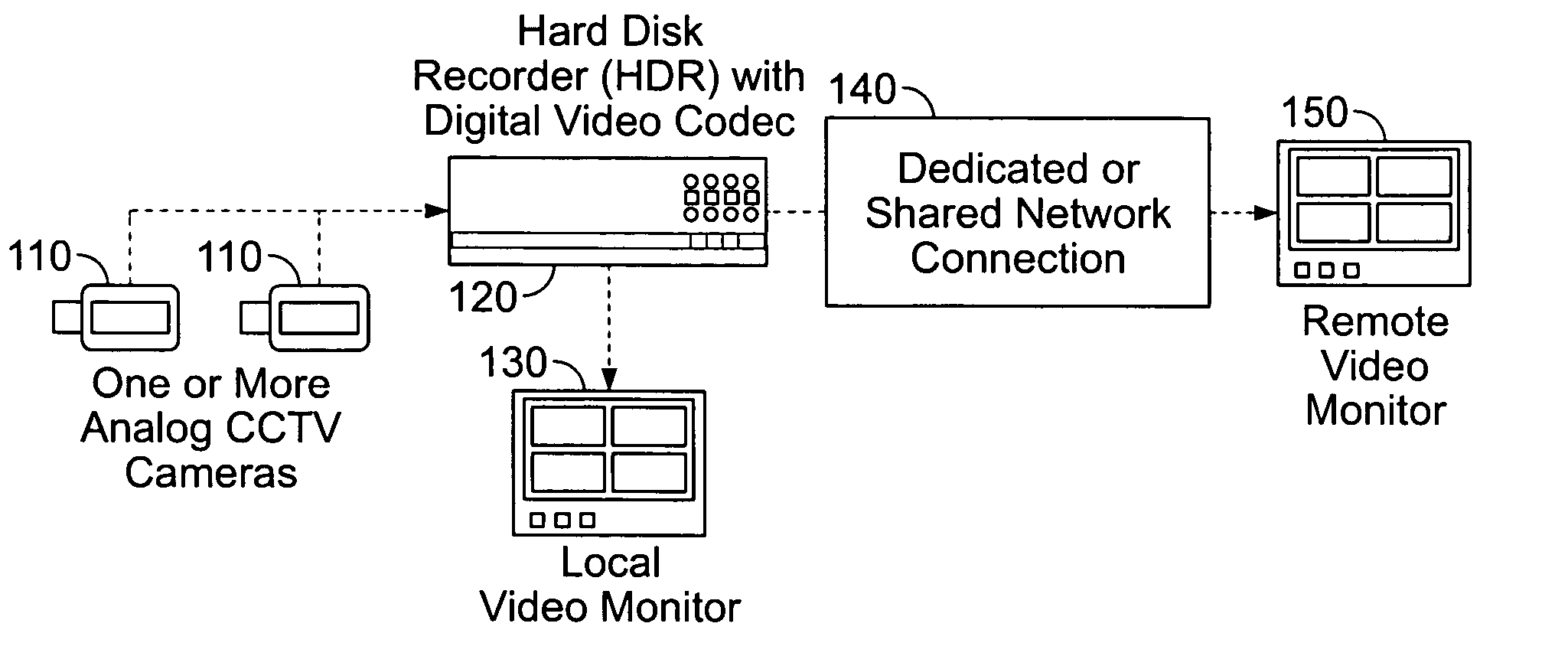Video monitoring application, device architectures, and system architecture
a video monitoring and application technology, applied in the field of data compression, can solve the problems of reducing the inability to meet the needs of the asymmetric encode/decode technology is not ideal for many emerging video monitoring devices and applications, so as to reduce the complexity of the imaging service platform architecture and the complexity of the device architecture. , the effect of reducing the cost and requirements of the baseband processor and video accelerator
- Summary
- Abstract
- Description
- Claims
- Application Information
AI Technical Summary
Benefits of technology
Problems solved by technology
Method used
Image
Examples
Embodiment Construction
[0033] Wavelet-Based Image Processing
[0034] A wavelet transform comprises the repeated application of wavelet filter pairs to a set of data, either in one dimension or in more than one. For still image compression, a 2-D wavelet transform (horizontal and vertical) can be utilized. Video codecs can use a 3-D wavelet transform (horizontal, vertical, and temporal). An improved, symmetrical 3-D wavelet-based video compression / decompression (codec) device is desirable to reduce the computational complexity and power consumption in video monitoring devices and applications to a level well below those required for DCT-based codecs, as well as to enable simultaneous support for processing still images and video images in a single codec. Such simultaneous support for still images and video images in a single codec would eliminate the need for separate MPEG (video) and JPEG (still image) codecs, or greatly improve compression performance and hence storage efficiency with respect to Motion JP...
PUM
 Login to View More
Login to View More Abstract
Description
Claims
Application Information
 Login to View More
Login to View More - R&D
- Intellectual Property
- Life Sciences
- Materials
- Tech Scout
- Unparalleled Data Quality
- Higher Quality Content
- 60% Fewer Hallucinations
Browse by: Latest US Patents, China's latest patents, Technical Efficacy Thesaurus, Application Domain, Technology Topic, Popular Technical Reports.
© 2025 PatSnap. All rights reserved.Legal|Privacy policy|Modern Slavery Act Transparency Statement|Sitemap|About US| Contact US: help@patsnap.com



